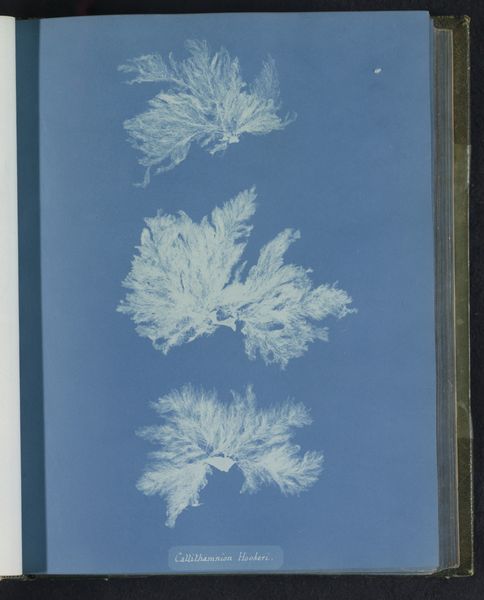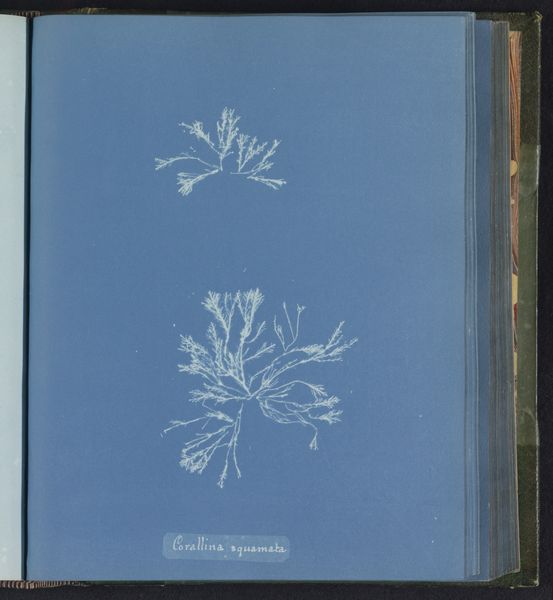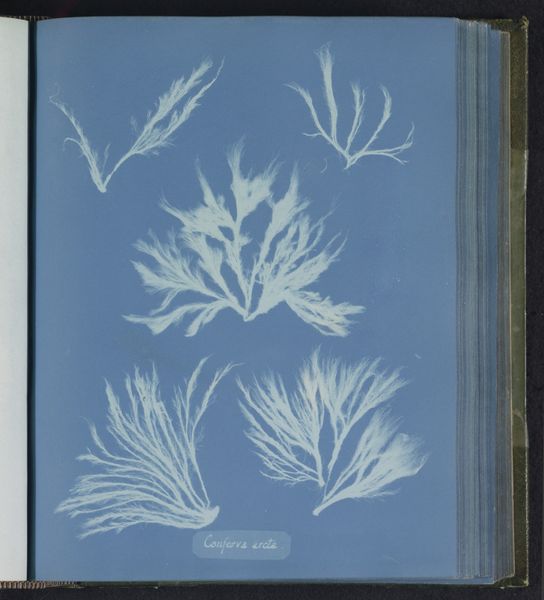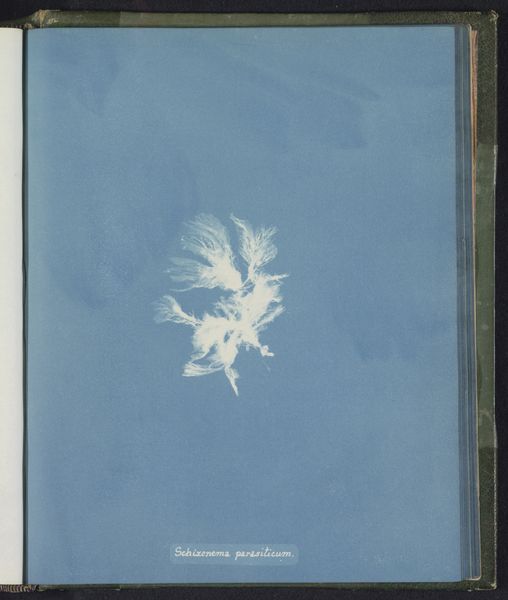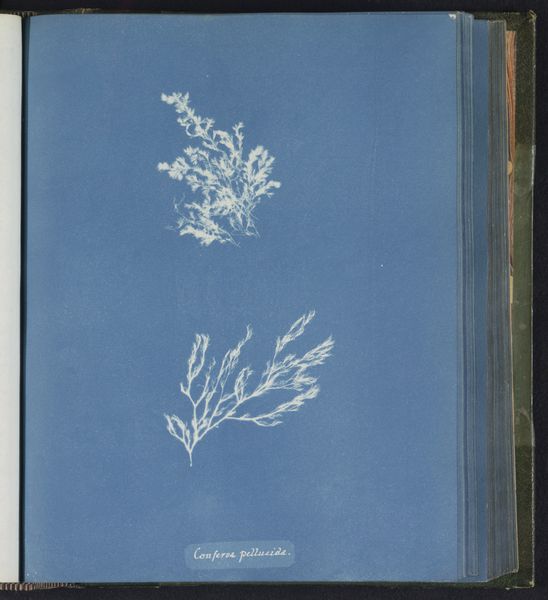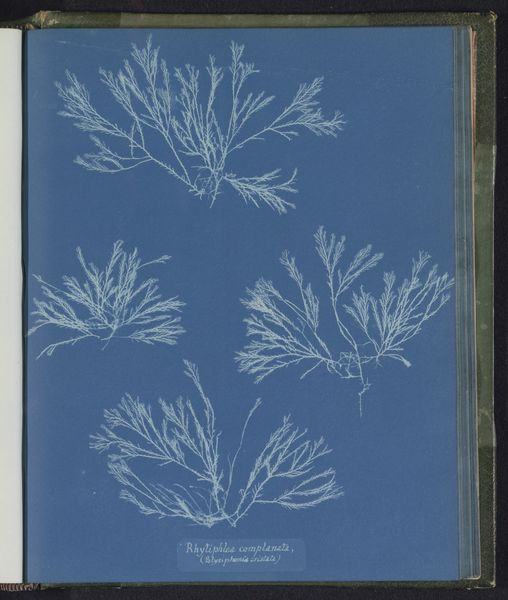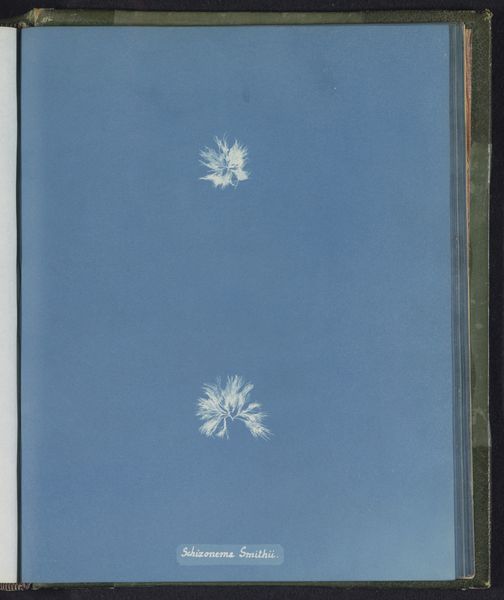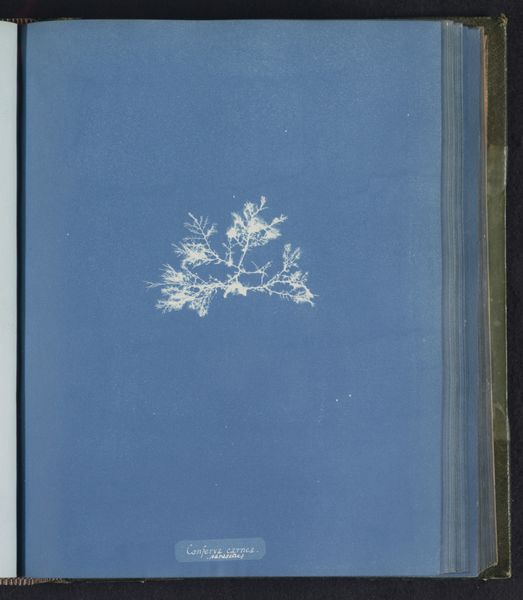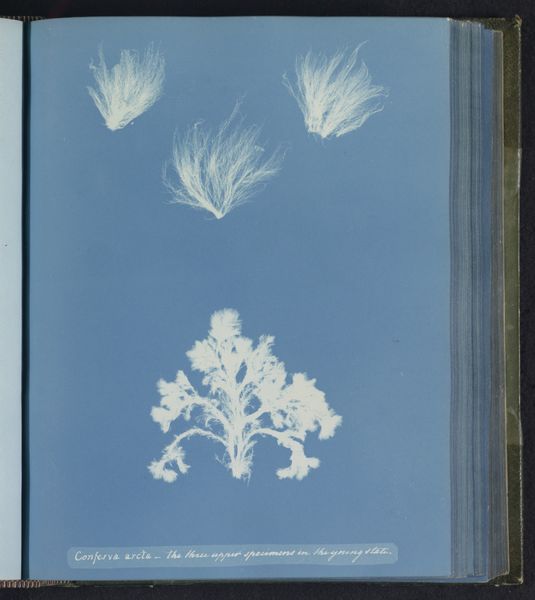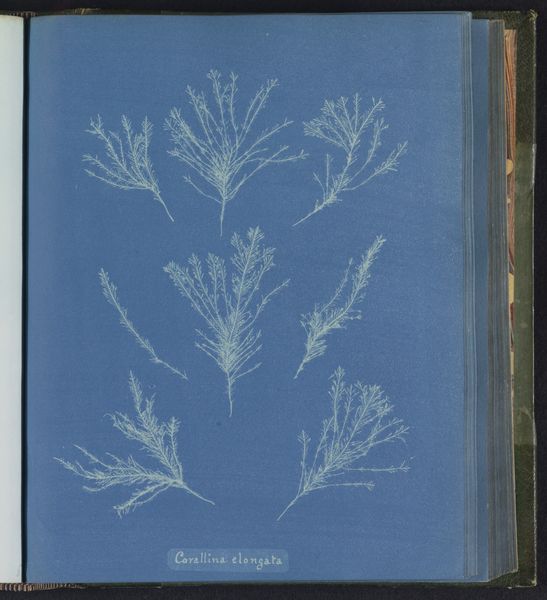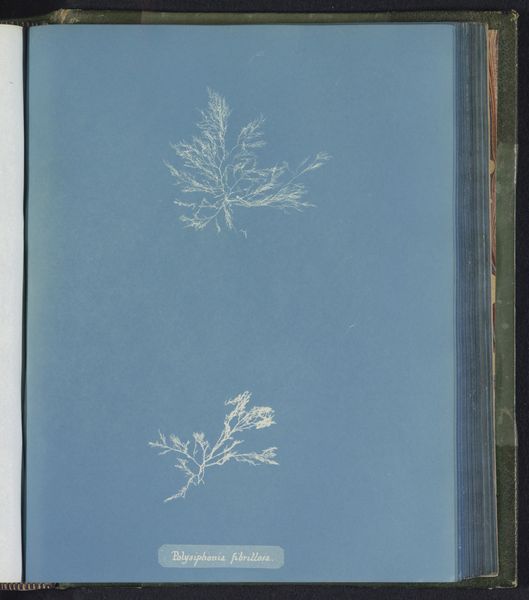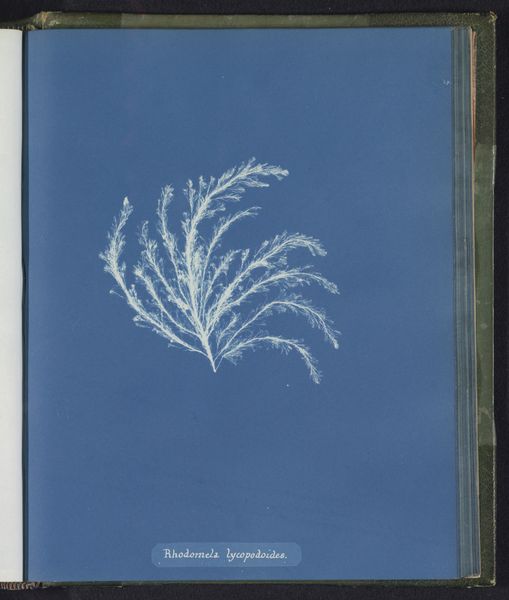
print, cyanotype, photography
# print
#
cyanotype
#
photography
Dimensions: height 250 mm, width 200 mm
Copyright: Rijks Museum: Open Domain
Editor: So, this is "Schizonema comoides," a cyanotype print made by Anna Atkins sometime between 1843 and 1853. It features delicate, fern-like shapes against a vivid blue background. It reminds me of pressed botanical specimens, yet the stark contrast gives it a somewhat ghostly feel. What stands out to you about this piece? Curator: The ghostly feeling you mention is quite perceptive. Cyanotypes, especially in Atkins’ work, act almost like spectral records. Think of photography itself: it captures light, and light carries within it traces, echoes of moments in time. This Schizonema, captured in Prussian blue, becomes more than just algae; it’s a memento, an index of life rendered in mineral form. Does the repetitive presentation—three examples—suggest anything to you? Editor: I guess the repetition is scientific, to show different angles, almost like a cataloguing method? Curator: Precisely! But consider how science and symbolism intertwine here. Three, of course, has been a significant number across countless cultures: representing the past, present, and future; the body, mind, and spirit. Do you think this symbolic element could enhance the emotional and psychological significance of this scientific recording of Schizonema? Editor: That makes a lot of sense. I hadn't considered how the scientific intent blends with a deeper symbolic meaning, enriching our understanding of the subject. I find that very intriguing. Curator: And this blending underscores how seemingly objective depictions often carry cultural weight. Looking closer allows us to understand that the "objective" gaze, even in scientific illustrations, remains inseparable from cultural narratives. Editor: That’s a perspective I will definitely keep in mind when looking at art in the future! Curator: Me too!
Comments
No comments
Be the first to comment and join the conversation on the ultimate creative platform.
